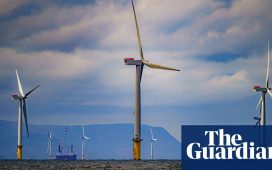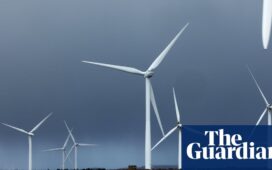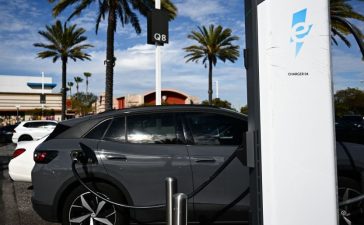The world added 50 per cent more renewable power in 2023 than 2022 – putting the global goal of tripling clean energy in the next six years within reach, experts have said.
The International Energy Agency, the world’s most authoritative voice on clean energy, made the announcement on Thursday after analysis of current policies and market developments across electricity, transport and heating.
The analysis found that renewables are tracking to increase by two-and-a-half times this decade, largely driven by solar power which accounted for three-quarters of additions worldwide. The renewables boost was mostly driven by China but capacity was also at all-time highs in Europe, the United States and Brazil.
The report came as a dose of good news after scientists confirmed earlier this week that 2023 was the hottest year on record “by a large margin” due to greenhouse gas emissions largely from burning fossil fuels.
“Onshore wind and solar PV are cheaper today than new fossil fuel plants almost everywhere and cheaper than existing fossil fuel plants in most countries,” said Fatih Birol, IEA’s executive director.
“There are still some big hurdles to overcome, including the difficult global macroeconomic environment. For me, the most important challenge for the international community is rapidly scaling up financing and deployment of renewables in most emerging and developing economies, many of which are being left behind in the new energy economy. Success in meeting the tripling goal will hinge on this.”
At the Cop28 climate summit in Dubai last month, 130 countries agreed to triple renewable energy, and double energy efficiency, by 2030.
Dave Jones, a programme director at energy think tank Ember, said last year’s clean energy rollout made it clear that hitting the 2030 target was “entirely achievable”.
“This means we are increasingly on track not only for a peaking of fossil fuel use this decade, but for sizable falls in fossil fuel use,” Mr Jones said.
However, he noted that the news was at odds with the huge investment planned by the oil and gas industry, fuelled by “superprofits” of the energy crisis.
“2024 will be the year that renewables changed from a nuisance for the fossil fuel industry, to an existential threat,” he added.
In China, the world’s largest polluter, the clean energy sector is expanding more rapidly than anywhere else on Earth. The country commissioned as much solar power last year as the entire world did in 2022, according to the IEA, while wind power rose by 66 per cent year-on-year.
Work began this week on a $7.7bn wind, solar and battery storage project in Shanxi province, close to Beijing, Bloomberg reported. However, the country is still building hundreds of coal plants.
The United States, the world’s second-largest polluter, announced this week that solar power would lead growth in electricity generation through 2025. The share of solar power will increase to 7 per cent in the next two years, up from 4 per cent in 2023, according to the US Energy Information Administration. However the lion’s share will still come from natural gas.
There was another note of optimism on Wednesday: the US saw greenhouse gas emissions decrease for the first time since the pandemic. Emissions were down 1.9 per cent year-on-year in 2023 – even as the economy expanded 2.4 per cent, according to analysis from the Rhodium Group.
Emissions are now more than 17 per cent below 2005 levels, due to a relatively mild winter and the decline in coal power plants in the US. While it’s all a step in the right direction, analysts said, that rate of decline needs to ramp up, more than tripling, and sustaining at that level, for the next six years to meet the country’s goal of cutting emissions in half by 2023.












